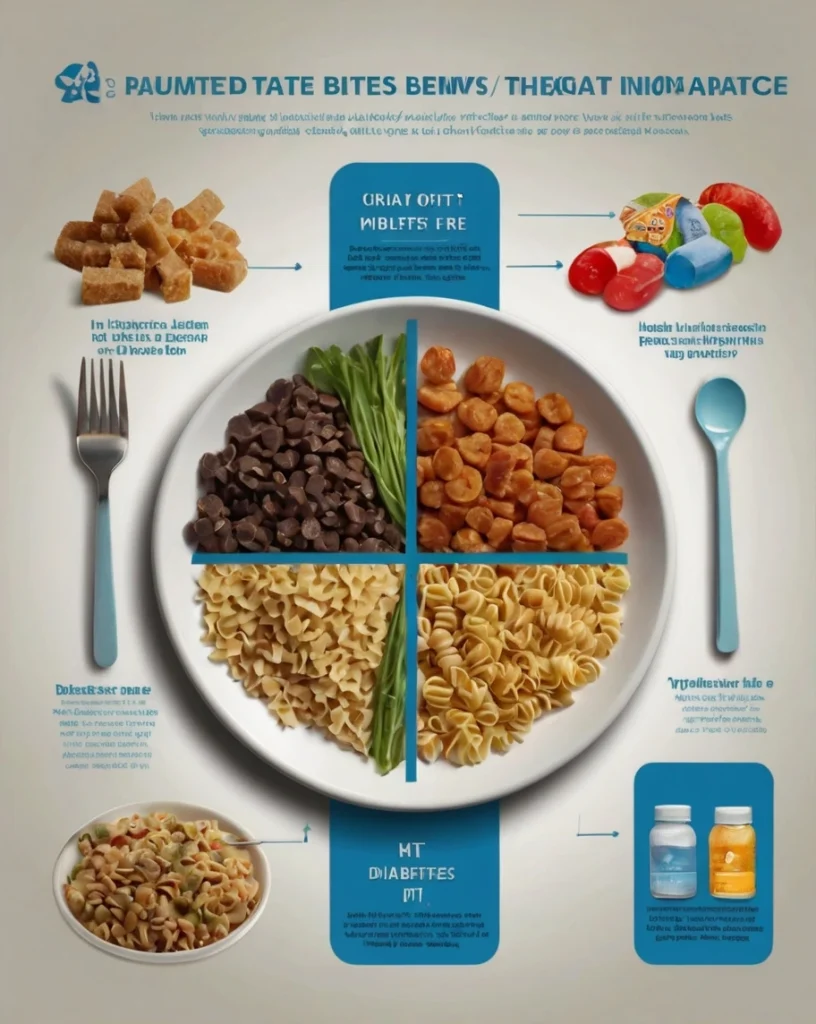Have you ever felt overwhelmed by the sheer amount of information out there about diabetes management? You’re not alone! Type 2 diabetes affects millions of people globally, but there’s a lot of misinformation surrounding it. Living with diabetes can feel challenging, but making informed lifestyle and nutrition choices can transform not only your health but your overall quality of life. Let’s dive into the essentials of a diabetes-friendly lifestyle while busting some stubborn myths along the way!
How Lifestyle and Nutrition Impact Diabetes Management
For those living with Type 2 diabetes, lifestyle and nutrition play a pivotal role in managing blood sugar levels. Instead of simply watching what you eat, it’s all about making thoughtful choices that support your individual health goals. Many people think that managing diabetes means giving up on tasty food forever—this isn’t the case! By understanding the way food affects your body and adopting mindful habits, you can enjoy a balanced life while keeping your blood sugar in check.
Debunking the Myths: What You Need to Know
Myth 1: Carbs Are the Enemy
A common misconception is that people with diabetes should completely avoid carbohydrates. The truth is, carbs are not the enemy; they are a necessary part of a balanced diet. The key is to choose high-fiber, whole foods that digest slowly, leading to more stable blood sugar levels.
Actionable Tip: Incorporate whole grains, legumes, and plenty of vegetables into your meals. Think quinoa, brown rice, and beans instead of white bread or sugary cereals.
Myth 2: Sugar Is Off-Limits
While it’s essential to monitor sugar intake, completely banning sugar can lead to feelings of deprivation, which may trigger cravings and overeating. Moderation is crucial! Small amounts of natural sugars, especially from fruits, can fit into a diabetes-friendly diet if balanced with fiber and proteins.
Did You Know? Fruits like berries and cherries have a lower glycemic index compared to other fruits, making them excellent choices!
The Benefits of a Good Nutrition Plan
Eating well can lead to improved blood sugar control, weight management, and overall health. Plus, a nutritious diet can help reduce feelings of fatigue, anxiety, and irritability often associated with diabetes. But how exactly do you build a good nutrition plan? Here’s a simple guide:
Steps to Create a Diabetes-Friendly Meal Plan
-
- Prioritize Whole Foods: Focus on fruits, vegetables, whole grains, lean proteins, and healthy fats. Fresh and unprocessed is usually the way to go!
-
- Balance Your Plate: Aim for a plate filled with half non-starchy vegetables, a quarter lean protein, and a quarter carbohydrates. This visual cue can help maintain portion control.
-
- Mind Your Snacking: Choose healthy snacks like nuts, yogurt, or veggie sticks instead of chips or sugary treats. These options can keep you feeling full and satisfied without spiking your blood sugar.
-
- Drink Smart: Stay hydrated with water, unsweetened tea, or infused water instead of sugary drinks. This can drastically cut your daily sugar intake!
-
- Plan Ahead: Meal prepping can save you from hurried, unhealthy choices. Set aside time once a week to prepare balanced meals and snacks.
Everyday Challenges and How to Overcome Them
Living with diabetes often comes with its share of challenges, from navigating social events to managing cravings. Being proactive can make a big difference!
-
- Social Situations: Don’t be afraid to ask questions about foods at gatherings. You can bring a diabetes-friendly dish to ensure there’s something you can enjoy.
-
- Cravings: Instead of reaching for unhealthy snacks, plan for alternatives. Keep healthy options on hand, so you’re less tempted by processed foods when hunger strikes.
-
- Eating Out: Look for restaurants with nutrition information available, or focus on ordering grilled options or salads. You can always modify dishes to better fit your dietary needs!
Quick Tips for Managing Diabetes
-
- Regular Monitoring: Keep track of your blood sugar readings to understand how different foods and activities affect your levels.
-
- Stay Active: Aim for at least 150 minutes of moderate aerobic activity each week. Activities can include walking, swimming, or cycling—whatever you enjoy!
-
- Learn to Read Labels: Get comfortable reading nutrition labels to understand what’s in your food and choose wisely.
Common Questions About Diabetes Management
Q: Can I eat sweets as a person with diabetes?
A: Yes! Enjoying sweets in moderation is possible. Consider pairing sugary treats with protein or fiber to minimize blood sugar spikes.
Q: What’s the best diet for someone with Type 2 diabetes?
A: A balanced diet filled with whole foods, healthy fats, lean proteins, and lots of fibers is ideal! Consider working with a registered dietitian for personalized meal planning.
Q: How do I manage stress related to my diabetes?
A: Stress management strategies include regular physical activity, mindfulness, deep breathing exercises, and engaging in hobbies you enjoy.
Summary: Take Charge of Your Health Journey
Living with Type 2 diabetes may be challenging, but you hold the power to make meaningful changes in your lifestyle and nutrition. By debunking myths and incorporating practical tips, you can create a sustainable plan that works for you. Remember, the journey to better health is not a sprint; it’s a marathon. Start small, be consistent, and celebrate your progress!
Empower yourself with knowledge, lean on supportive communities, and don’t hesitate to reach out for help when needed. Your journey with diabetes is unique, and with the right tools and resources, you can thrive!
Take action today—whether it’s experimenting with a new healthy recipe or simply planning an enjoyable walk. Every step counts towards a healthier, happier you!

